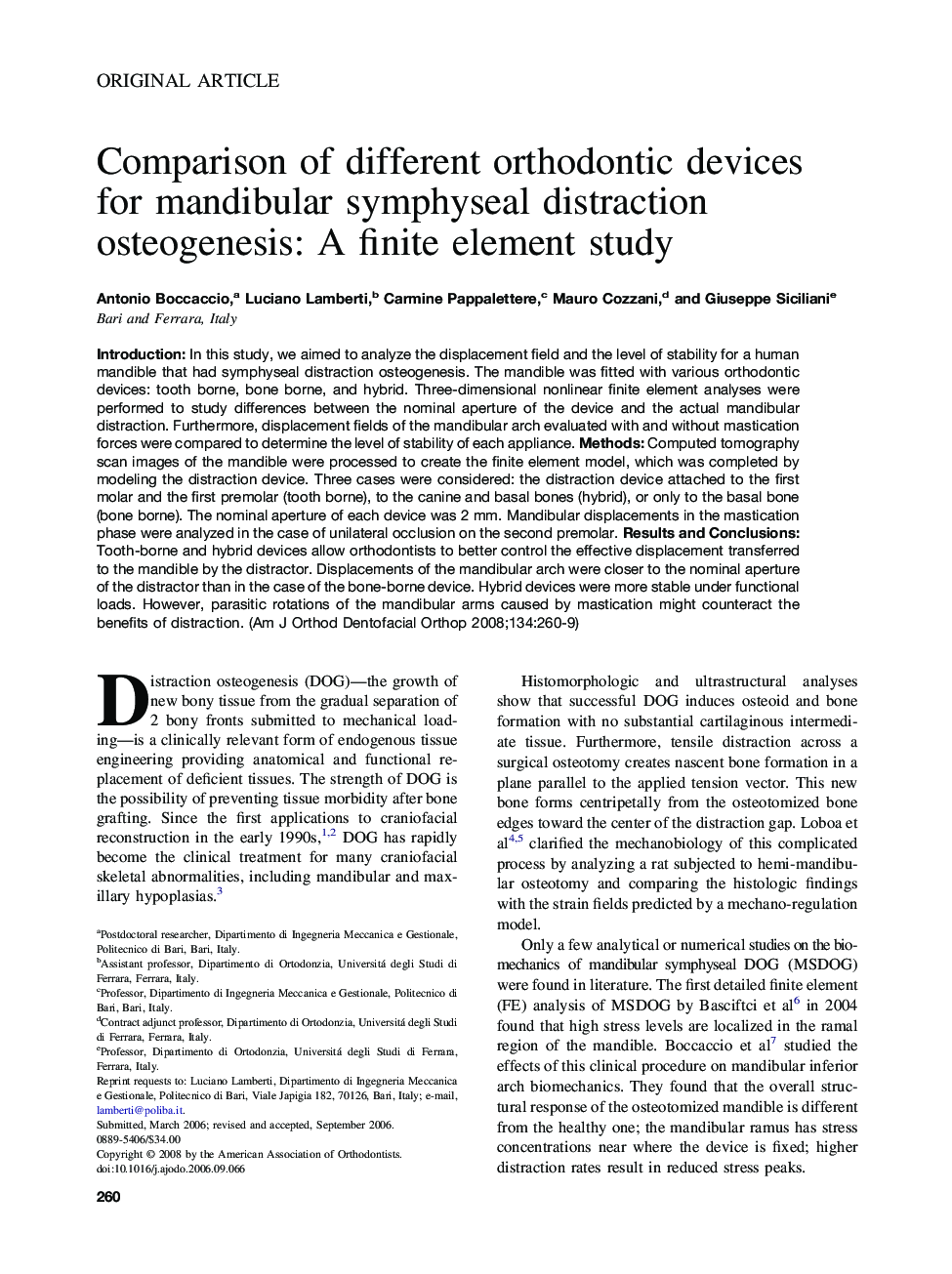| کد مقاله | کد نشریه | سال انتشار | مقاله انگلیسی | نسخه تمام متن |
|---|---|---|---|---|
| 3118535 | 1582777 | 2008 | 10 صفحه PDF | دانلود رایگان |

Introduction: In this study, we aimed to analyze the displacement field and the level of stability for a human mandible that had symphyseal distraction osteogenesis. The mandible was fitted with various orthodontic devices: tooth borne, bone borne, and hybrid. Three-dimensional nonlinear finite element analyses were performed to study differences between the nominal aperture of the device and the actual mandibular distraction. Furthermore, displacement fields of the mandibular arch evaluated with and without mastication forces were compared to determine the level of stability of each appliance. Methods: Computed tomography scan images of the mandible were processed to create the finite element model, which was completed by modeling the distraction device. Three cases were considered: the distraction device attached to the first molar and the first premolar (tooth borne), to the canine and basal bones (hybrid), or only to the basal bone (bone borne). The nominal aperture of each device was 2 mm. Mandibular displacements in the mastication phase were analyzed in the case of unilateral occlusion on the second premolar. Results and Conclusions: Tooth-borne and hybrid devices allow orthodontists to better control the effective displacement transferred to the mandible by the distractor. Displacements of the mandibular arch were closer to the nominal aperture of the distractor than in the case of the bone-borne device. Hybrid devices were more stable under functional loads. However, parasitic rotations of the mandibular arms caused by mastication might counteract the benefits of distraction.
Journal: American Journal of Orthodontics and Dentofacial Orthopedics - Volume 134, Issue 2, August 2008, Pages 260–269